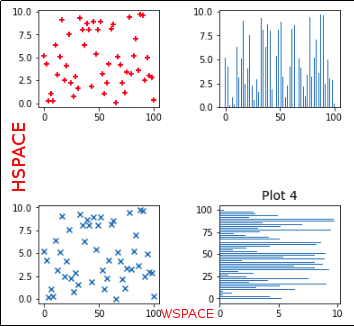
The margins can be specified as either:Ī single value (for same margin on all sides). The interior margins) in addition to the automatic space added for tick This is margin space that is added between neighboring subplots (i.e., The main map plotting but can be accessed by methods that plot To set aside space on more than one side (e.g.Ĭlearance= would set a clearance of 1 cm on west Would set a clearance of 1 cm on all sides). S, or n or x for both w and e or y for both Subplot on the specified side, using side values from w, e, Reserve a space of dimension clearance between the margin and the įrame ( bool or str or list) – Set map boundaryĬlearance ( str or list) – clearance. Typeset your tag numbers using lowercase Roman numerals use +R for +o dx to offset the tag’s reference point in theĭirection implied by the justification. Surrounding text box requested via +g or +p [3p/3p, i.e., 15% +c dx to set the clearance between the tag and a Selects the mirror opposite (suitable for exterior tags). Tag to refpoint (suitable for interior tags) while +J instead

+j| J refpoint to specify where the tag should be placed Surround the number or letter by parentheses onĪny side if these should be typeset as part of the tag.

This sets the tag of the first, top-left subplot and othersįollow sequentially. Specify automatic tagging of each subplot. Note that only one of figsize or subsize can be provided atĪutolabel ( bool or str) – ]] Subsize ( tuple) – Specify the dimensions of each subplot directly as ( width, height). Ncols ( int) – Number of horizontal columns of the subplot grid.įigsize ( tuple) – Specify the final figure dimensions as ( width, height). Nrows ( int) – Number of vertical rows of the subplot grid. Parameters are available to specify the systematic layout, labeling, Begin byĭefining the layout of the entire multi-panel illustration. Of subplots that each may contain a single self-contained figure. This method is used to split the current figure into a rectangular layout subplot ( nrows = 1, ncols = 1, *, figsize = None, subsize = None, autolabel = None, frame = None, clearance = None, projection = None, margins = None, region = None, sharex = None, sharey = None, title = None, verbose = None, ** kwargs ) Therefore I would suggest to go for one of these Figure. png the labels are nicely readable, even for very large zooming (beyond something useful for a LaTeX document). To avoid difficulties in readability due to resolution issues a vector format is best.Plt.savefig('example1.png', bbox_inches='tight', format='png') Plt.savefig('example1.pdf', bbox_inches='tight', format='pdf') Image = np.concatenate((image, row_image))Īxes.set_yticks()Īxes.set_yticklabels(, rotation=90, fontsize=30, va="center") # va="center" centers the label nicely Row_image = np.concatenate(images, axis=1)
#SUBPLOT FIGSIZE CODE#
Unfortunately I do not have a direct solution for these gaps, but since I was wondering why not combining the images in numpy and then using matplotlib for the labelling, I played around a bit based on your code (by the way, thanks for the very nice example code!):įig = plt.figure(figsize=(13, 9), dpi=dpi)Ĭolors = # used to crate a chessboard pattern, which was better for visual feedback Depending on the scaling of the image in your final document the dimensions will become irrelevant. I do not get why you would need specific dimensions. Plt.savefig('example.png', bbox_inches='tight', format='png') Images = įor col_idx, (col, image) in enumerate(zip(row, images)):

In addition, I do not know what is the best format in which I should save this image, so that the text is in good quality and so that the quality of the image does not degrade significantly when zooming (I will be using this image in Latex).īelow I attach a simple example for reproduction.Plt.subplots_adjust(wspace=0, hspace=0, left=0, bottom=0, right=1, top=1)

My second problem is that despite setting wspace=0 and hspace=0, there are gaps between the subplots. Unfortunately, when I save this image, its dimensions are 2359 x 1720. cols = 9įig, axes = plt.subplots(rows, cols, figsize=(img_size * cols // dpi, img_size * rows // dpi), dpi=dpi) I've found that a good way is to set the dpi parameter to 100, and for example the height as the height in pixels divided by the dpi value. Unfortunately, I'm having trouble setting the right figsize and dpi values. However, I decided to use matplotlib, because it is much easier to add labels to the axes with it. The easiest way for me to do this would be using numpy and concatenating the images together using, for example, np.concatenate. I would like these images not to be resized, that is, I would like the resulting image to have dimensions of at least 9 * 256 x 7 * 256 = 2304 x 1792. Each component image has dimensions of 256 x 256. I would like the resulting image to consist of 7 rows and 9 columns.


 0 kommentar(er)
0 kommentar(er)
